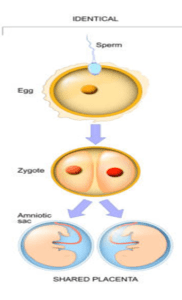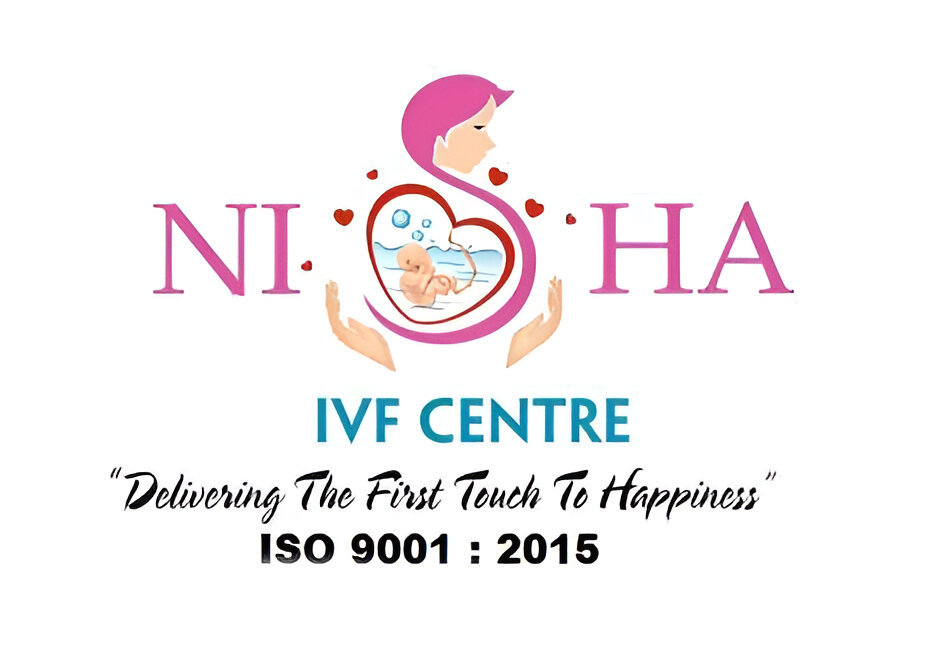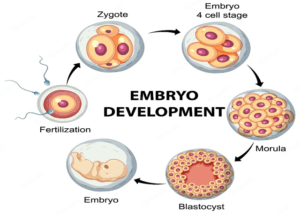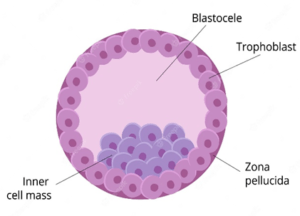If you are on the remarkable journey of fertility treatment, specifically in vitro fertilization (IVF), you may have come across the term “hatched blastocyst day 5.”
As you embark on your journey toward parenthood, it is crucial to understand the various stages of embryo development during an IVF cycle. The hatched blastocyst on day 5 is a significant milestone among these stages. This crucial stage marks the point at which the fertilized egg, known as a blastocyst, breaks free from its protective shell, the zona pellucida, and is ready for uterine implantation.
“In assisted reproductive technology, achieving a hatched blastocyst on day 5 is a positive sign of embryo quality and viability. The ability of an embryo to hatch and reach this stage is closely linked to its potential for successful implantation and subsequent development into a healthy pregnancy, explains Dr Nisarg Patel, one of the best IVF doctor in India.
At Nisha IVF, widely recognized as one of the best IVF centre in Ahmedabad, Dr Nisarg Patel offers comprehensive fertility solutions to couples struggling with infertility.
In this blog, we will explore the significance of the hatched blastocyst on day 5 in the success of an IVF cycle.
Understanding Blastocyst Development
The journey of embryo development begins with the fusion of sperm and egg, forming a zygote. Over several days, the zygote divides and develops into a multicellular structure known as the blastocyst. By day 5, the blastocyst consists of two distinct components: the inner cell mass (ICM) and the trophectoderm.
What is a Hatched Blastocyst?
A hatched blastocyst is an embryo that has developed to the stage where it breaks out of its protective shell, called the zona pellucida. This process, known as hatching, usually occurs on day five after fertilization.
The blastocyst hatching on day 5 represents a critical milestone in embryo development and plays a significant role in fertility treatments. This event marks the transition from a compact cluster of cells to a more dynamic structure, preparing the blastocyst for implantation and potential pregnancy.
“Understanding the intricacies of blastocyst development and the hatching process helps fertility specialists make informed decisions to maximize the chances of successful pregnancy in assisted reproductive technologies, says Dr. Nisarg Patel, a renowned IVF doctor and one of the founders of Nisha IVF Hospital in Ahmedabad.”
Is Day 5 Fully Hatched Blastocyst?
While day 5 is a critical stage in blastocyst development, not all embryos are fully hatched by this point. Some embryos may still be in the process of hatching or may hatch slightly later. Hatching is a gradual process that begins on day four and continues into day five and sometimes even day 6.
On day 5, embryos may exhibit different stages of hatching. Some may have hatched entirely from the zona pellucida. While others may have only partially hatched or be enclosed within the zona pellucida.
What Does a Good Day 5 Blastocyst Look Like?
A good day-five blastocyst typically exhibits the following characteristics:
 1. Well-defined inner cell mass (ICM):
1. Well-defined inner cell mass (ICM):
The ICM is the cluster of cells within the blastocyst that will eventually develop into the fetus. A good blastocyst will have a visible and well-formed ICM.
2. Cohesive and uniform trophectoderm (TE):
The TE is the outer layer of cells in the blastocyst that will become the placenta. In a good blastocyst, the TE cells will be tightly packed and show a uniform appearance.
3. Expanded blastocoel cavity:
The blastocoel is a fluid-filled cavity within the blastocyst. A good day five blastocyst will have an adequately expanded blastocoel. It indicates proper fluid accumulation and overall development.
These characteristics indicate the quality and viability of the blastocyst. It signifies a higher chance of successful implantation and healthy pregnancy.
How Long Does It Take for a Hatched Blastocyst Day 5 to Implant?

Implantation involves the blastocyst attaching itself to the endometrium and burrowing into it. Once implanted, the blastocyst establishes a vital connection with the maternal blood supply. This allows for exchanging nutrients and waste products between the mother and the developing embryo.
What are the Chances of a Day 5 Hatching Blastocyst Success in Implantation?
On average, the chances of implantation for a hatched blastocyst on day five range from 30% to 50%. However, these figures are approximate and can vary from case to case. Some studies suggest high-quality blastocysts are more likely to implant successfully than lower-quality embryos.
While a day-five blastocyst has a better chance of implantation than earlier-stage embryos, various factors can still influence success rates. These factors include the quality of the blastocyst, the age and overall health of the woman, the receptivity of the uterine lining, underlying fertility issues, and the overall success rates of the fertility clinic or IVF center.
How Successful is a 5-Day Blastocyst FET?
Frozen embryo transfer (FET) with 5-day blastocysts has shown higher success rates in IVF treatment. On average, the success rates for 5-day blastocyst FET range from 40% to 60%, although individual results may vary. Allowing embryos to develop to the blastocyst stage before freezing enhances the selection process for the most viable embryos. This optimized selection contributes to improved implantation rates and higher chances of achieving a successful pregnancy.
Higher success rates in FET with day-five blastocysts can be attributed to several factors. First, blastocysts are more advanced in their development than earlier-stage embryos. This increases the likelihood of implantation.
The extended culture to the blastocyst stage also allows for a better assessment of embryo quality, as only the most potent and viable embryos typically reach this stage. Moreover, the process of freezing and thawing blastocysts has also improved in recent years, contributing to higher success rates.
Can a Hatched Blastocyst Day 5 Split into Twins?

Monozygotic twins are formed when a single fertilized egg, or blastocyst, divides into two separate embryos. This division can happen at different stages after the blastocyst has hatched.
When a hatched blastocyst splits into two embryos, each embryo will have the same genetic material originating from the same fertilized egg.
These embryos will develop independently and can result in a pregnancy with identical twins. The exact reasons why twinning occurs have yet to be fully understood. But it is believed to involve a combination of genetic and environmental factors.
Is Blastocyst Better Than Embryo?
Yes, a blastocyst is generally considered better than an earlier-stage embryo. Compared to earlier-stage embryos, blastocysts have several advantages. They have a higher likelihood of successful implantation. This is because they have progressed further in their development and are more likely to be chromosomally normal.
Additionally, blastocysts provide a clearer picture of embryo quality. Their ability to form a blastocoel cavity and undergo hatching and the quality and organization of the ICM and TE can be assessed. This assessment helps select the most suitable embryos for transfer, increasing the chances of a successful outcome.
However, it is essential to consider each patient’s specific circumstances and individual factors when determining the most appropriate stage of embryo development for transfer. Consultation with an expert like Dr Nisarg Patel, one of the best IVF doctor in Ahmedabad, can provide personalized guidance based on the situation.
Conclusion
Day 5 embryo hatching is a significant milestone in the IVF journey. This critical milestone offers hope to couples struggling with infertility, with improved implantation rates and higher chances of successful pregnancies. Choosing the best IVF centre and expert guidance can make all the difference when seeking fertility treatments.
At Nisha IVF, one of the best IVF centre in Ahmedabad, we prioritize the well-being of our patients and offer a range of advanced fertility treatments. Our dedicated team, led by Dr. Nisarg Patel, strives to provide exceptional care and guidance throughout the process.
Frequently Asked Questions:
Q.1. Are Day 5 embryos good?
Yes, day five embryos, specifically blastocysts, are considered suitable due to their advanced development, higher chances of implantation, and improved pregnancy outcomes.
Q.2. How many blastocysts are normal for IVF?
The number of normal blastocysts for IVF varies depending on several factors, including the individual’s fertility and age. Generally, having multiple high-quality blastocysts increases the chances of a successful IVF outcome.
Q.3. Why do embryos stop growing on day 5?
Embryos may cease to grow on day five for various reasons, such as chromosomal abnormalities, poor embryo quality, or unfavorable environmental conditions.
Q.4. Does a hatched blastocyst implant faster?
A hatched blastocyst does not necessarily implant faster than other blastocysts. Implantation timing depends on various factors, including the embryo’s quality and the receptivity of the uterine lining.



 1. Well-defined inner cell mass (ICM):
1. Well-defined inner cell mass (ICM): 